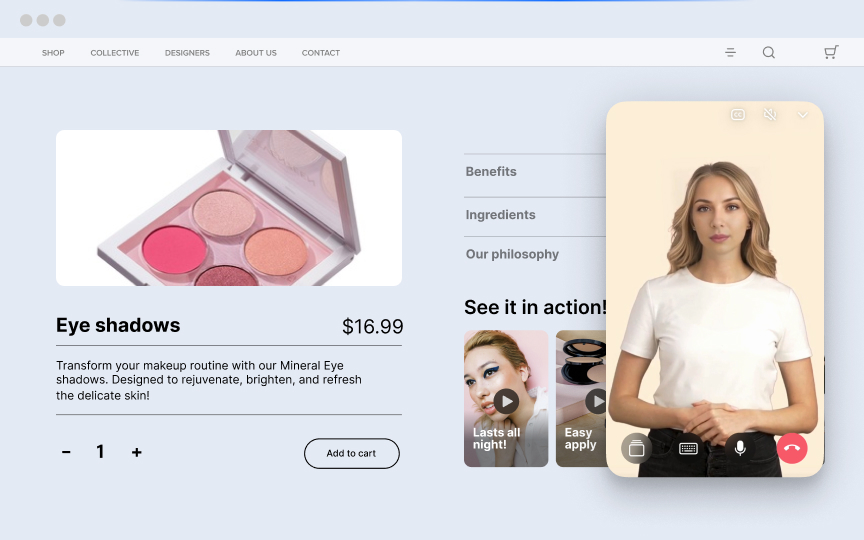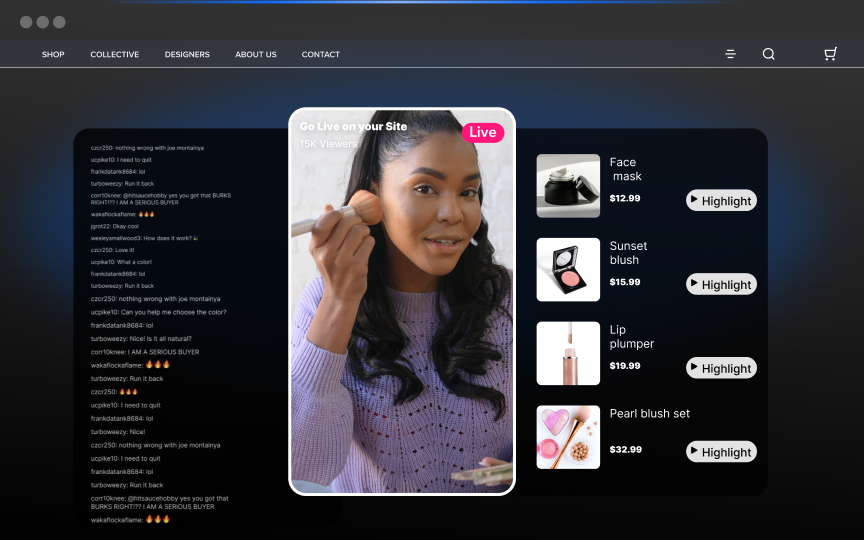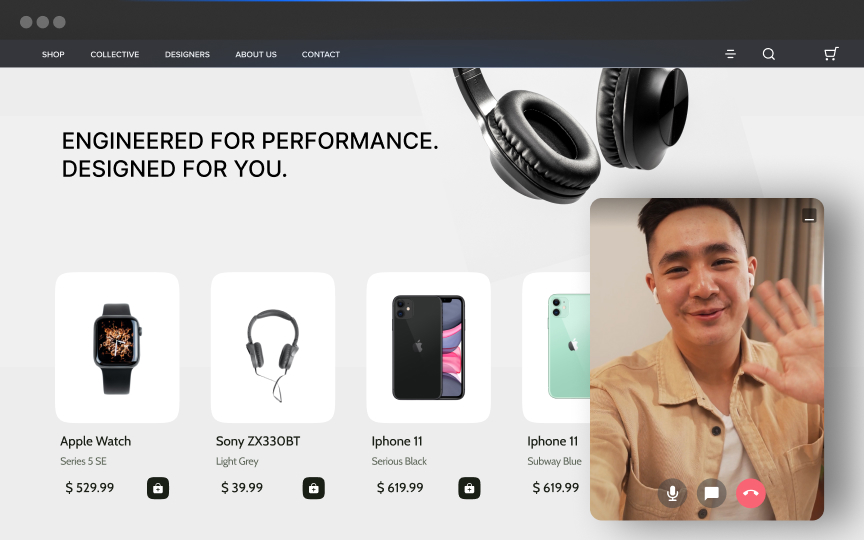Have you ever wondered how to keep up with the rapid changes in digital shopping? Video commerce has surged from hundreds of billions to a projected multi-trillion-dollar industry by 2028. This growth signifies a fundamental shift in consumer behavior; today’s shoppers seek experiences rather than just product pages.
If your website still presents the duplicate content to every visitor, you risk falling behind competitors who provide personalized, real-time experiences. Gen Z and Millennials, who will soon account for 75% of video commerce buyers, crave authenticity and instant interaction that static web pages simply cannot offer.
In this article, you will discover why traditional approaches are failing, the forces reshaping enterprise content marketing, and practical steps to transition to data-driven, video-first engagement strategies.
Why Static Websites and Traditional Content Strategies Are Failing
With consumer expectations rapidly evolving, static websites and traditional content strategies are becoming increasingly ineffective at engaging audiences, as they fail to deliver the personalized, dynamic experiences that modern shoppers demand. Here are the key reasons why:
- Lack of Engagement: Static pages with only photos and text often result in a rapid decline in visitors, whereas interactive videos significantly enhance conversion rates.
- Video Commerce Growth: Shoppers are increasingly preferring to buy products directly from videos, a feature often absent in basic HTML sites.
- Personalization Issues: Fixed pages deliver duplicate content to all users, resulting in a lack of engagement and making visitors feel overlooked. Dynamic platforms, on the other hand, offer tailored experiences.
- Changing Demographics: By 2029, Gen Z and Millennials will account for 75% of video commerce buyers, preferring mobile-first and video-rich experiences that acknowledge their individuality.
- Authenticity Deficit: Traditional sites struggle to build trust, as interactive video demos and comment streams foster immediate connections, whereas conventional pages often bury reviews and lack personalization.
4 Key Trends Driving the Content Strategy Revolution in 2025
As you develop your content plan for 2025, it's essential to acknowledge four major shifts that are transforming everything from website structures to campaign timing. These changes are occurring more rapidly than many large companies realize.
1. AI Personalization is Essential
AI personalization isn't a future trend; it's already a necessity. Innovative platforms analyze consumer behavior and purchase data in real time, displaying specific product videos at the moment of interest. This level of relevance surpasses what fixed pages can offer, contributing to video commerce's projected 42 percent global market share, particularly in the Asia-Pacific region.
2. Global vs. Local Solutions
The "global vs. local" challenge now has a new approach. Central teams establish brand guidelines, while regional marketers collaborate with local creators to adapt pricing, promotions, and content, ensuring design consistency is maintained. This strategy ensures a unified brand voice that resonates in diverse markets, such as Seoul, São Paulo, and Seattle.
3. Diverse Content Formats
Content formats have expanded beyond traditional text and images. Short vertical videos, AR try-ons, and social-style clips consistently outperform static formats, especially among Gen Z and Millennials, who engage with short videos daily and prefer social commerce experiences integrated into their feeds.
4. Customer Lifecycle Thinking
A comprehensive customer lifecycle approach ties these elements together. Videos that raise awareness, quizzes that aid consideration, shoppable videos that drive conversions, and loyalty-boosting content must seamlessly transition from one stage to the next. As younger buyers dominate video shopping, applying the customer lifecycle becomes essential for success.
The New Enterprise Content Strategy Framework
To create compelling content, it's essential to break down silos between marketing, product, sales, and customer success teams. When departments collaborate, they can transform scattered campaigns into a cohesive buyer journey, guiding customers from their first impression to purchase.
- Cross-Department Collaboration: Shared dashboards and weekly reviews foster communication among teams, ensuring alignment and consistency in content strategies.
- Modern Metrics: Shift focus from traditional metrics, such as page views, to revenue-driven metrics that highlight the content's impact on pipeline influence, deal speed, and customer lifetime value.
- Structured Flexibility: Global brands must strike a balance between consistency and local adaptation, enabling regional teams to modify imagery and offers while maintaining a unified brand voice.
- Building vs. Buying: In a fast-paced environment, partnering with proven solutions, such as Firework's AI-powered video commerce platform, offers quicker implementation and faster returns compared to lengthy development projects.
Execution Strategies That Replace Static Content
Static content is becoming obsolete. Brands must adopt innovative execution strategies that harness data-driven insights and interactive elements to engage audiences effectively. This section uncovers how to transform content operations, optimize the buyer's journey, and leverage modern website features to create dynamic and engaging experiences.
Leverage Data-Driven Insights
Imagine anticipating your audience's preferences before they even engage. By leveraging real-time data signals, such as views and clicks, you can replace rigid editorial calendars with agile strategies that highlight trending topics instantly. AI-driven segmentation transforms traditional video advertising into personalized micro-campaigns, delivering the right product clips at the perfect moment.
Transform Content with Interactivity
Static images are making way for interactive video, shoppable media, and AR try-ons. Shoppers can pause videos, tap on products, and add them to their carts seamlessly. This approach significantly boosts time-on-site and conversion rates, especially when combined with authentic video commerce solutions and trusted creators.
Optimize the Buyer Journey
Mapping every content asset to the buyer journey is crucial for driving conversions. Quick how-to reels create awareness, in-depth demos boost consideration, and user reviews strengthen loyalty. AI-powered video commerce solutions enhance personalization and streamline the checkout process, creating a video-first commerce experience that effectively turns curiosity into sales.
Innovate with Dynamic Website Features
Enterprise websites prioritize goal-oriented navigation and mobile-first design, catering to Gen Z and Millennials who expect seamless experiences across devices. AI personalization enhances user interactions by dynamically adjusting content to match visitor interests.
Immersive visuals, such as 3D models and interactive elements, transform browsing into an exploration experience. At the same time, advanced video commerce solutions integrate these features into existing websites, effectively bridging the engagement gap left by static HTML.
Continuous Improvement Through Analytics and Feedback
Harnessing real-time analytics and feedback is essential for optimizing video commerce. By leveraging insights from user interactions, brands can enhance their content and engagement strategies. Here are the key benefits of this approach:
- Real-time tracking provides insights from every view, swipe, and add-to-cart.
- Video commerce platforms collect second-by-second data on watch time and clicks, instantly identifying friction points.
- Creates feedback loops among marketers, merchandisers, and customers.
- Interactive formats enable quick polls and Q&As, with results integrated into dashboards. BuzzFeed's dynamic quizzes achieve a 96% completion rate through data-driven refinements.
- Detailed metrics reveal content gaps, such as product comparisons for new visitors.
- Allows for rapid updates to videos, fostering a self-improving content system that effectively engages audiences.
Embracing Dynamic Video Commerce for Shoppers
Traditional websites struggle to meet the needs of today’s mobile-native buyers, lacking personalization and engagement as video commerce is projected to grow into trillions by the late 2020s. By 2029, Gen Z and Millennials are expected to represent a significant percentage of shoppers, seeking authentic and interactive experiences.
Dynamic, data-driven content powered by AI personalization and shoppable video enhances user engagement and streamlines the checkout process. Transitioning to intelligent video commerce can be quick and effective, enabling brands to transform customer experiences and drive revenue growth with solutions like Firework's video showroom. Book a demo today, it's easy and hassle-free!
Unlock Exclusive Insights
By submitting this form, you agree to Firework's privacy policy and consent to receive personalized marketing communications. You can unsubscribe at any time.





























